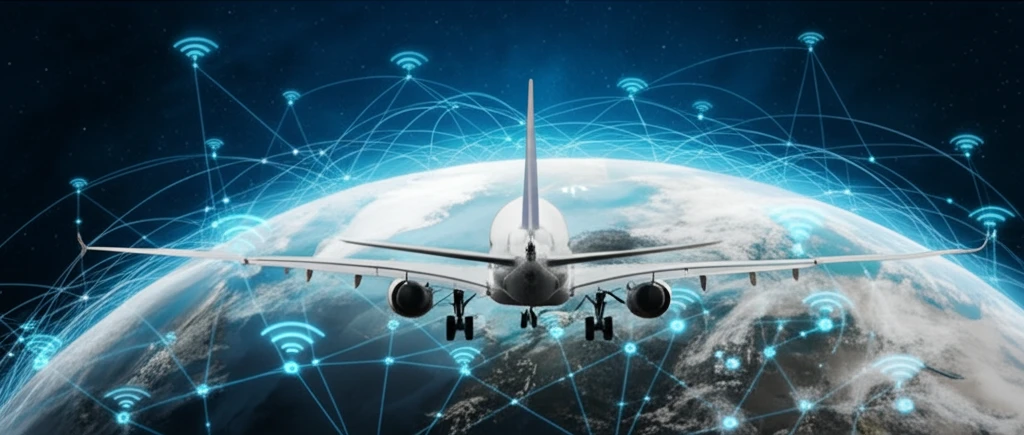
Sky-High Safety: How IoT is Revolutionizing Aircraft Health Monitoring
"Discover how the Internet of Things (IoT) is taking flight in aviation, transforming aircraft maintenance and ensuring safer skies through real-time data and predictive analysis."
In the high-stakes world of aerospace, ensuring the health and optimal performance of aircraft is paramount. Traditionally, this has been achieved through rigorous maintenance schedules and the use of onboard electronic devices. These systems monitor a range of critical parameters, from engine temperatures and cabin pressure to wing vibrations and fuel consumption, all to prevent potential hazards and ensure flight safety.
The integration of fly-by-wire technology has significantly improved aircraft performance and reliability while also reducing the weight of control systems. Avionics, the electronic systems used on aircraft, are at the heart of flight management and engine control. As the complexity of onboard systems increases, so does the need for more sophisticated health monitoring at every level of the aircraft.
Conventional health monitoring relies on the 'black box,' which records critical flight data. However, this information is only accessible once the aircraft is on the ground. Now, imagine a system that provides real-time health updates, predicts potential failures, and enhances decision-making during flight. That's the promise of the Internet of Things (IoT) in aviation.
The IoT Revolution Takes Flight

The integration of IoT technology in aircraft health monitoring marks a significant leap forward. By replacing the traditional black box with a network of interconnected sensors and real-time data transmission, IoT offers a more proactive and responsive approach to aircraft maintenance and safety. This innovative system continuously transmits data from onboard sensors to a base station, providing a comprehensive overview of the aircraft's health status.
- Real-Time Data: Continuous monitoring of critical parameters.
- Predictive Maintenance: Anticipating failures and optimizing maintenance schedules.
- Enhanced Decision-Making: Providing crucial information for pilots and ground crew.
- Improved Safety: Reducing the risk of in-flight failures and incidents.
The Future of Flight is Connected
The integration of IoT technology represents a paradigm shift in aircraft health monitoring, offering unprecedented levels of safety, efficiency, and predictive capability. As technology continues to advance, the potential for IoT in aviation is limitless. From enhanced data analytics and improved decision-making to the development of fully autonomous aircraft, the future of flight is undoubtedly connected.
